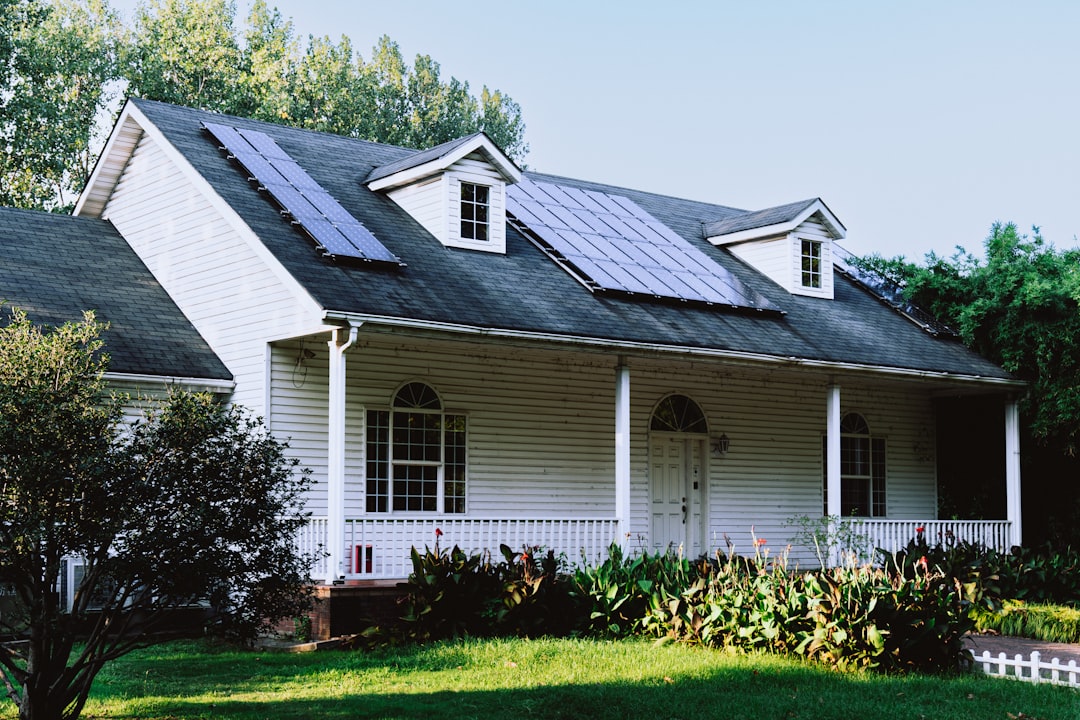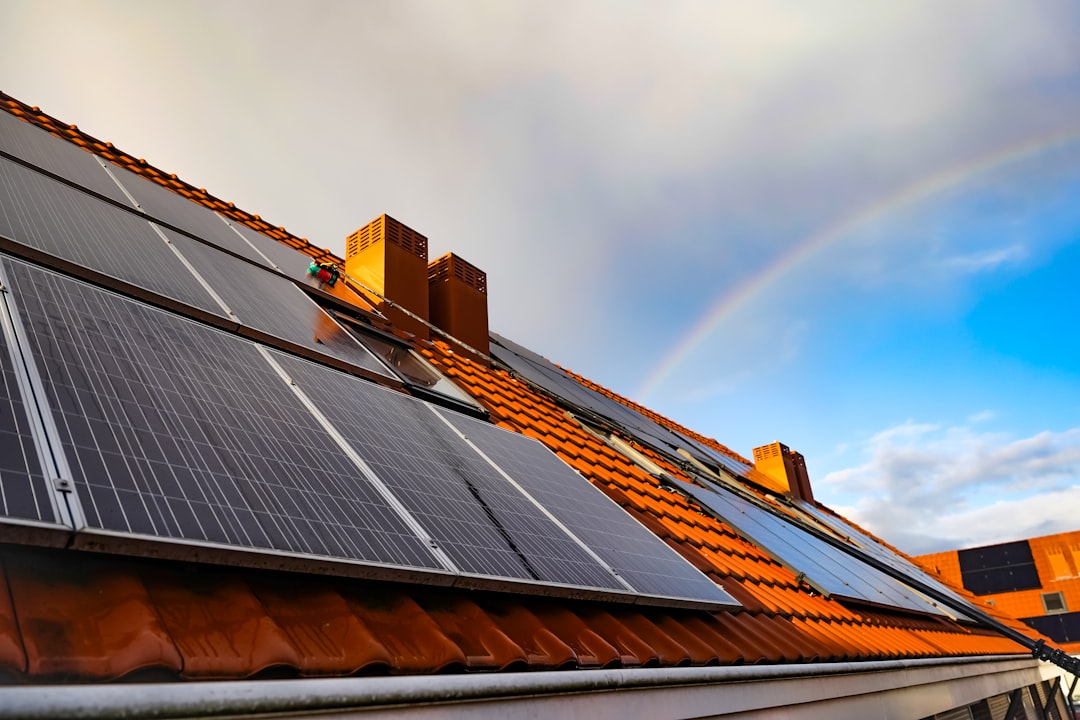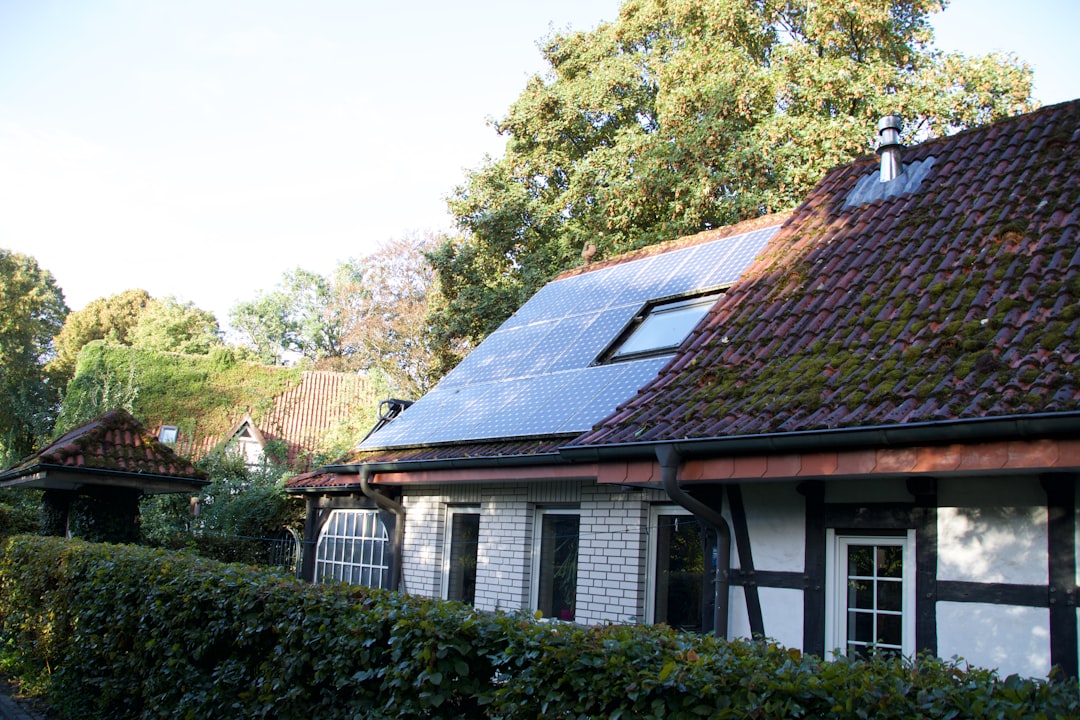

Engage prospects with a scan and streamline customer engagement with FREE QR code marketing tools by Sona – no strings attached!
Create a Free QR CodeFree consultation

No commitment

Engage prospects with a scan and streamline customer engagement with FREE QR code marketing tools by Sona – no strings attached!
Create a Free QR CodeFree consultation

No commitment
Digitally transforming home energy rating services is about meeting the evolving expectations of today’s homeowners. Traditionally, the industry has relied on manual audits, printed assessment forms, and phone-based scheduling. These analog workflows often lead to miscommunication, slow turnaround, and missed follow-up opportunities, leaving homeowners uncertain and providers missing high-value prospects when leads are not tracked or followed through.
As consumers now demand greater transparency, self-service, and instant access to results, bridging the gap between physical and digital interactions has become a core industry challenge. QR codes are emerging as a strategic connector, removing offline-to-online gaps and, as outlined in Sona QR’s marketing guide, enabling a seamless customer experience.
For home energy rating services, QR codes offer a practical way to boost customer engagement, reduce friction in bookings, and ensure that audit results or recommendations are not forgotten or lost in paper clutter. Embedding QR codes at key customer touchpoints empowers providers to deliver actionable information, update homeowners on evolving energy standards, and keep prospects moving forward on their efficiency journey.

Home energy rating teams often struggle with analog bottlenecks: paper intake forms slow down lead capture, printed reports are misplaced, and static mailers leave little room for feedback or re-engagement. These points of friction can cause promising prospects to fall through the cracks or churn due to slow follow-up. QR codes bridge these disconnects by providing instant, trackable access to digital tools and by empowering providers to stay connected long after the site visit.
The transition from paper-first to scan-first does not require a complete overhaul of your operation. Start by embedding QR codes into materials that already exist: audit summaries, appointment cards, leave-behind checklists, vehicle decals, and partner brochures. Each code should be tied to a clear action such as scheduling, viewing a personalized dashboard, or securing a rebate. As data starts flowing into your CRM and analytics, you can refine where codes appear and which calls to action perform best.
A leading energy consultancy moved from manual mailing and phone outreach to QR-powered dashboards and dynamic intake forms. Within one quarter they documented a 40 percent increase in homeowner engagement and a similar lift in follow-up actions such as booking upgrade consultations and submitting rebate forms. By using a platform like Sona QR to capture scan behavior and automate CRM enrichment, the company minimized manual oversight and ensured no promising lead went unnoticed.

In an industry where most audits and upgrades still begin with face-to-face encounters or printed materials, a major frustration is the inability to track which offline engagements convert into booked business. Anonymous traffic and paper-based touchpoints often result in lost opportunities and limited visibility into client interests, which stalls retargeting and upsell efforts. QR codes solve this by turning every piece of collateral into a measurable gateway to digital action.
Speed and simplicity matter to homeowners who balance competing priorities. No one wants to download an app or call a hotline just to book an audit or view results. A well-placed QR code routes them directly to what they need: booking, dashboards, rebates, or advice. Providers benefit from the instant stream of structured data that follows every scan, and from the flexibility to update campaign content without reprinting materials as standards, rebates, and building codes evolve.
When firms embed QR codes on audit summaries, community events, or new home construction banners, they enable actionable next steps that previously required manual input or follow-up calls. The result is higher customer satisfaction and stronger conversion rates, supported by clean data that fuels smarter marketing and operations decisions.

Home energy rating teams frequently struggle with generic communications and missed segmentation. Without knowing what prompted a homeowner to engage, it is difficult to personalize outreach or deliver content that sticks. Selecting the right QR format helps providers capture intent and deliver the next logical step with minimal friction.
Formats can be mixed across a single campaign to match user context. For instance, an event flyer might use a code linking to a micro-landing page that includes a vCard to save a specialist’s contact and a form to request a quote. Dynamic QR codes add agility to update offers, messaging, and destinations without reprinting, while providing centralized tracking by placement and audience segment.
With a tool like Sona QR, you can generate any of these formats in a central dashboard, assign UTM parameters for attribution, and update destinations as offers evolve. Dynamic codes are recommended for most marketing and operations use cases in this industry, while static codes are best reserved for evergreen resources such as a general education hub.

Growth bottlenecks in home energy rating services often appear at the junction of analog and digital workflows. Providers lose out when high-intent prospects remain anonymous at events or when the rich engagement signals from in-home visits are not captured. QR placement converts these hard-to-measure moments into trackable, actionable interactions, revealing real demand and shortening time to revenue.
Begin by auditing your most common physical touchpoints. List where homeowners see your brand or materials in the real world, then add a clear call to action next to a QR code that matches the context. Each code should be unique by location and media type so you can measure which placements drive the best outcomes.
Each placement converts an analog touchpoint into a reliable digital signal. Over time you can see which channels and contexts deliver the highest-quality leads, allowing you to refine messaging, allocate budget more effectively, and reduce wasted spend.

Missed bookings and slow follow-up after property visits are common frustrations in this field. QR codes eliminate much of the manual inefficiency by turning intent into action right away and by keeping the conversation going with relevant content.
When implemented together, these use cases create a cohesive end-to-end experience. Homeowners move from awareness to education, then to scheduling, then to decision and incentive redemption, all without having to search for links or make time-consuming calls.
Each QR scan captures intent, context, and behavior. By deploying codes across outreach, on-site materials, and follow-up assets, you can automatically segment your audience and fuel precise retargeting through email, SMS, and paid media. The result is a set of audiences built on real actions rather than assumptions. For campaign execution ideas, see Sona’s retargeting playbook.
Think about the buyer journeys in home energy rating services. A homeowner looking to lower utility bills behaves differently from a builder seeking a HERS Index on a new construction project, and differently again from a realtor seeking an energy score to enhance a listing. Distinct QR codes tied to each journey produce first-party signals that can route people into the right nurture paths and offers.
With discipline and the right tooling, each scan becomes a predictive signal that informs the next best action. Over time, your retargeting efficiency improves because you are nurturing based on verified interest rather than generic demographic assumptions.
Disconnected campaigns are costly. Leads drop off when the story changes between print materials, event outreach, and digital channels. QR codes act as a consistent connective thread that unifies offline and online engagement while feeding attribution data back to your systems. For measurement frameworks across print and digital, explore Sona’s offline attribution.
To maximize impact, keep your message and design consistent across channels and ensure that the QR code CTA aligns with the content around it. When a homeowner scans a code on a brochure that promises a cost-savings calculator, they should land directly on that calculator. With centralized management through a platform like Sona QR, you can control destinations, update content, and track performance without juggling dozens of tools.
QR codes serve as the offline onramp to your digital marketing engine. They also unlock a new layer of data collection across channels that were previously difficult to measure. With a centralized platform like Sona QR, you can manage codes, monitor performance, and sync scan activity with your CRM and ad platforms to keep your funnel accurate and responsive.
A strong QR program requires more than placing codes on paper. It demands clear goals, thoughtful design, and tight integration with your systems. Use this checklist to plan and launch your next campaign with confidence, and adapt it to your most common physical media such as audit packets, event collateral, and contractor invoices.
Keep your creative consistent and your calls to action crystal clear. The benefit of scanning should be explicit and immediate. For example, “Scan to see your personalized upgrade plan” will outperform “Scan here” every time.
Clarify what you want the scan to accomplish. Common goals in home energy rating include booking an audit, downloading a sample HERS report, submitting a rebate, or requesting a builder consultation. Anchor each use case to a business outcome such as increased audit volume, improved rebate completion rates, or higher close rates for upgrades.
Make this practical and specific. At a community sustainability fair, your goal might be event sign-ups for in-home audits. On a contractor invoice, your goal might be accelerating rebate submission within 48 hours of installation. Tying each code to a single, focused outcome makes the experience cleaner for the homeowner and more measurable for your team.
Choose the format that fits the destination and your need for flexibility. Static codes work for fixed, evergreen assets like a general education hub or a PDF guide that rarely changes. Dynamic codes are best for campaigns where you need tracking, retargeting, and the ability to switch destinations without reprinting.
If you are unsure, default to dynamic codes. They allow you to layer UTMs for attribution, add geo-based routing when appropriate, and experiment with different destinations. In a field environment where conditions change, dynamic codes save time and reduce waste.
Design the code to be scannable in the environments where it will live. Include a clear frame, brand colors, and a benefit-driven CTA. Ensure there is sufficient contrast between the code and the background, and leave quiet space around the code to improve camera recognition.
Test extensively. Scan from multiple devices, at different angles, and in varied lighting. Try the code at the expected distance for the placement: a yard sign requires larger size compared to a code on a report cover. Validate load speed and mobile usability of the destination, then ask a colleague unfamiliar with the campaign to try it and share feedback.
Roll out codes where they align with your audience behavior. For home energy rating services, this typically includes printed audit summaries, direct mailers, event signage, model home displays, vehicle decals, and contractor invoices. Create a placement map that assigns unique codes to each channel and physical location so results can be compared.
Match the CTA and value to the context. A code on a brochure at a builder expo might offer a HERS Index checklist, while a code on a homeowner invoice might promise a two-minute rebate submission. Contextual relevance increases scan rates and downstream conversion.
Turn every scan into data you can act on. Use Sona QR to track scans by time, location, and device, and to enrich contacts in your CRM. Monitor conversion behavior and identify drop-off points at the destination page. If a landing page has high bounce, experiment with shorter forms, clearer copy, or a more compelling offer. For aligning analytics with sales outcomes, see Sona’s pipeline guide.
Iterate continuously. A/B test CTA copy and creative, try different form lengths, and move codes to new placements if scans are low. Share performance updates with field teams so they can promote the strongest offers in person and adjust scripts to highlight QR benefits.
One of the industry’s persistent frustrations is the difficulty of connecting analog engagements to revenue outcomes. Without a data pipeline from offline scans to online behavior and ultimately to booked work, teams cannot confidently allocate budget. Modern analytics and attribution tools close this gap by linking scans to the full buyer journey.
Sona is an AI-powered marketing platform that turns first-party data into revenue through automated attribution, data activation, and workflow orchestration. It identifies and enriches website visitors, scores accounts by intent, and syncs audiences in real time across ad platforms and CRMs.
The goal is not just to know that a scan occurred, but to understand how that scan influenced the path to conversion. Did the homeowner complete a form, attend a webinar, or book a consultation? Which code placements yield higher conversion rates, and how does performance vary by city or campaign? Sona QR and Sona.com help answer these questions with clarity.
For homeowners, analytics-informed campaigns translate into more relevant communications and faster routes to value. For providers, they enable confident investments in placements and messages that measurably accelerate growth.
Small improvements in design, placement, and follow-up can produce outsized gains in scan rates and ROI. Focus on tips that align with your most common physical media and the buyer journeys you support, and ensure that staff in the field can explain the value of scanning in simple language.
Consider the creative opportunities unique to this industry. A window decal on a model home can link to a sustainability calculator, while a sticker on a breaker panel can direct homeowners to a maintenance plan that preserves energy performance. Use QR codes to meet people where they are with immediate, practical value.
With these tactics, providers close the loop on common pain points. Warm leads do not go cold between touchpoints, and marketing spend becomes transparent and defensible.
Adoption of QR codes is transforming how home energy rating services overcome operational inefficiencies, lost leads, and poor attribution. By making every client-facing asset an interactive digital touchpoint, providers can plug data gaps, surface engagement signals that were previously invisible, and move prospects through the buying journey with minimal friction. The benefits compound across the lifecycle: faster bookings, better-informed homeowners, higher rebate completion, and clearer revenue attribution.
Home energy rating services sit at the crossroads of property value, sustainability, and rising digital expectations. A thoughtful QR strategy bridges analog interactions with data-driven engagement, reduces costly segmentation and follow-up missteps, and creates measurable value in every customer encounter. With Sona QR, you can generate and manage dynamic codes, centralize performance data, and connect scan activity to your CRM and attribution models. Start creating QR codes for free.
QR codes have revolutionized home energy rating services by transforming static reports and inspections into interactive, accessible experiences. They enable homeowners and inspectors to instantly access detailed energy data, streamlining communication and empowering informed decisions that drive energy efficiency improvements. Imagine effortlessly providing clients with up-to-date energy ratings and actionable insights right at their fingertips—enhancing trust and accelerating project approvals.
With Sona QR, you can create dynamic, trackable QR codes that update in real time without the need to reprint materials. This means every scan delivers precise, measurable engagement data, helping you identify which reports or recommendations resonate most and convert interest into action. Whether you’re onboarding new customers or delivering superior service, Sona QR connects every scan to meaningful outcomes that boost your home energy rating business.
Start for free with Sona QR today and unlock the full potential of QR codes to elevate your home energy rating services—turn every scan into an opportunity for growth and impact.
A home energy rating helps homeowners understand their energy performance, identify improvement opportunities, and access rebates or certifications, resulting in better-informed decisions and potential cost savings.
You can book a home energy rating service by scanning QR codes found on event flyers, newsletters, utility bill inserts, or provider materials that link directly to scheduling forms, simplifying the booking process.
An energy rating score reflects a home's energy efficiency based on audit results and recommendations, helping homeowners understand their current performance and prioritize upgrades.
Improving your home's energy rating involves following personalized audit recommendations, scheduling upgrades, and utilizing rebates or certifications accessible through QR code resources provided by your energy rating service.
ENERGY STAR certification levels vary by home type and performance criteria, and providers use QR codes on materials to guide homeowners through rebate submissions and certification verification processes.
QR codes connect offline materials to digital tools, enabling instant booking, access to personalized dashboards, rebate submissions, and real-time tracking of homeowner engagement for better follow-up and marketing.
Common QR code formats include web links to dashboards or calculators, forms for scheduling or surveys, vCards for contact sharing, SMS or email for quick messages, and app download links for energy tracking.
Effective QR code placements include audit reports, event materials, partnership brochures, direct mail, contractor invoices, installed equipment stickers, and vehicle decals to reach homeowners at relevant moments.
Providers can track scan data by time, location, and device, analyze engagement across channels, sync data with CRM systems, and continuously test and update QR code destinations and calls to action for better conversions.
Key steps include choosing a clear use case, selecting the appropriate QR code type, designing and testing codes for scannability, deploying across high-impact channels with relevant CTAs, and tracking and optimizing performance.
Use Sona QR's trackable codes to improve customer acquisition and engagement today.
Create Your FREE Trackable QR Code in SecondsJoin results-focused teams combining Sona Platform automation with advanced Google Ads strategies to scale lead generation

Connect your existing CRM

Free Account Enrichment

No setup fees
No commitment required

Free consultation

Get a custom Google Ads roadmap for your business






Launch campaigns that generate qualified leads in 30 days or less.
